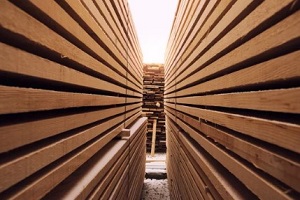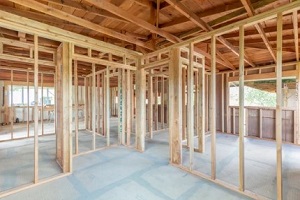 When constructing a building, contractors rely on materials of varying types, sizes and strengths to accomplish the task. Even within the same structure, a material such as wood may vary according to its purpose, with framing utilizing different wood than studs. This means that carefully selecting the ideal material for each purpose is critical rather than using the same grade lumber for the entire project.
When constructing a building, contractors rely on materials of varying types, sizes and strengths to accomplish the task. Even within the same structure, a material such as wood may vary according to its purpose, with framing utilizing different wood than studs. This means that carefully selecting the ideal material for each purpose is critical rather than using the same grade lumber for the entire project.
When it comes to framing, some lumber is more resilient and better suited to the task than others. Here is what you should know about the best grade of lumber for framing, as well as other characteristics that you should pay attention to when making a choice on what to buy.
The Best Grade of Lumber for Framing
The grade of a piece of lumber is determined based on its quality. If it has defects, is warped or contains substantial knotting, it will be graded lower than a piece that is smooth, strong and aesthetically pleasing. In general, framing should be done with material no lower than grade 2 lumber.
Grade 2 lumber may have some knots, but it is strong and structurally sound. It may also contain some wane, or remnants of bark and wood fibers on the outside edge(s) of the material. When possible, a higher grade is always preferred, but grade 2 lumber can get the job done.
The Most Important Characteristics of Framing Lumber
Once a contractor has determined the appropriate grade for their project based on expectations, needs and budget, there are other factors to consider as well. For instance, both pine and cedar can achieve a grade 2 label—so which is the better choice for framing?
Wood Grain
The grain of the wood is one of the first places to look. The direction of the grain impacts how well the lumber can hold up to pressure exerted in line with and opposing the grain. Lumber with a straight grain that is closely packed together is denser, which reflects the strength of the wood, making it ideal for framing.
Wood Type
The wood type also makes a difference. While redwoods and cedar are exceptionally strong and resilient to challenges such as moisture and humidity, they can be more expensive than other options. Pressure treated wood can work for framing for a reduced cost.
As an additional advantage, treated wood can also come as a fire retardant option, either coated with chemical inhibitors or having those chemicals directly injected into the pores of the wood itself. This is an effective way to make the structure safer, as wood that takes longer to burn will allow more time for visitors and residents to evacuate in the case of a fire.
In general, wood that has been pressure treated to instill fire preventive chemicals into the core will stand up to flames better than lumber that has had a coating applied. Underneath the coating, the wood remains untreated, and fire can affect it normally. However, for maximum protection and strength, even redwoods can be treated with flame inhibitors before being used for framing.
Moisture Content
The moisture content of the lumber selected for a framing project also matters. Wood that is still moist and fresh can be prone to rotting or growing mold, and it is also more flexible and less sturdy. The drier a wood is, the better it is for framing.
Kiln dried and heat treated (KD-HT) wood is superior in the field because it effectively removes latent moisture that can compromise the integrity of the frame and also eliminates pests. Without this treatment, even dry wood could contain termites or other unwanted pests that may enter the structure or eat the wood from the inside out.
Check Local Ordinances
 Be sure to check local ordinances where the construction will take place. Some municipalities make certain framing decisions independently, such as requiring that the framing elements that touch the foundation be made of pressure-treated wood.
Be sure to check local ordinances where the construction will take place. Some municipalities make certain framing decisions independently, such as requiring that the framing elements that touch the foundation be made of pressure-treated wood.
This can make certain decisions simpler or require that multiple types of wood be purchased for a framing project. The types of wood mandated will typically vary depending on where in the United States the project is taking place, since some wood is more common in certain areas and not others.
Get Ideal Framing Lumber from a Reputable Wholesaler
A framing project is a large undertaking, and ensuring that the right materials are used from the beginning is the best way to prevent costly fixes later. The experts at Curtis Lumber & Plywood can help you to understand the best types of framing lumber for your application.
Contact us to discuss your project with professionals or to place an order for the lumber wholesale materials that you will need to begin your framing project.

